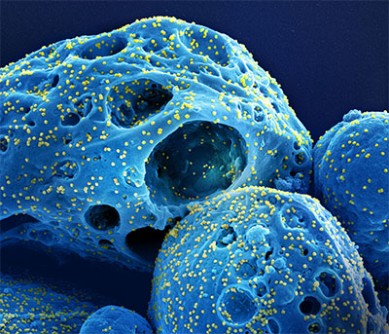The risk of developing long COVID is significantly lower following an infection with the Omicron variant than after an infection with earlier coronavirus variants. This was the finding of a study by University Medicine Halle, which was published in the International Journal of Infectious Diseases. The analysis examined information gathered from 11,000 people about their infection history, vaccination status, and post-infection symptoms. The data provide strong evidence that the risk for long-term effects after a re-infection with the coronavirus is lower if the patient did not develop long-COVID after the initial infection.
Long-term symptoms can develop after a coronavirus infection, commonly referred to as long-COVID” or post-COVID-19 condition. The underlying risk factors are currently under intensive investigation.
“We wanted to understand the connection between long COVID and different coronavirus variants, vaccinations, and past infections,” explains Sophie Diexer, first author of the new study and researcher at the Institute of Medical Epidemiology, Biometry and Informatics at University Medicine Halle. “Our study shows that the percentage of people who develop long COVID symptoms after an infection was lowest at the time when Omicron was prevalent.”
The risk was found to be around three to four times lower after an Omicron infection than after an infection with the wild-type variant. Around half of all wild-type infected individuals reported persisting symptoms. It should be noted, however, that the majority of all infections occurred while Omicron was dominant.
“In purely numerical terms, this means that most people developed long COVID following an Omicron infection,” says Diexer.
The study also provides strong evidence of a protective effect once the patient has recovered from a coronavirus infection.
“People who did not develop persistent symptoms after their initial infection had a significantly lower risk of developing long COVID following re-infection than people who were infected with the coronavirus for the first time. We were surprised by the scale of this effect,” explains Diexer. However, the scientists were unable to demonstrate that, in the event of a vaccine breakthrough, the vaccine had any protective effect against long COVID. Due to the timing of the study, however, it was not possible to analyze the vaccine that specifically targeted the Omicron variant.
The study is based on the Germany-wide DigiHero project, in which more than 48,000 people participated through June 2022.
“Studies have already looked at the relationship between the risk of long COVID and the different variants, but none has taken into account infection history,” explains professor Rafael Mikolajczyk, director of the Institute of Medical Epidemiology, Biometry and Informatics at University Medicine Halle. “Of the respondents, approximately 11,000 reported at least one coronavirus infection that had occurred in the twelve weeks prior to when the data was collected for our study. Classification was based on the predominant variant at the time of the reported infection.”
Participants were questioned about 24 typical long COVID symptoms, with 2,822 individuals reporting that they had experienced such symptoms. Of these, 406 (14 percent) reported experiencing severe fatigue, 237 (8 percent ) severe headaches, and 202 (7 percent) severe shortness of breath. The intensity of the symptoms was not related to the coronavirus variant.
Follow-up surveys are currently being conducted to explore the persistence of long-COVID symptoms.
Reference: Diexer S. et al. Association between Virus Variants, Vaccination, Previous Infections, and Post COVID-19 Risk. International Journal of Infectious Diseases (2023). doi: 10.1016/j.ijid.2023.08.019
